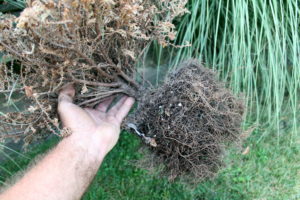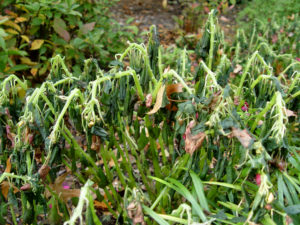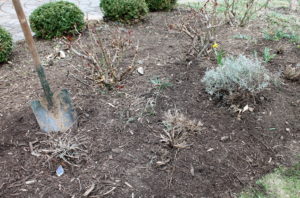Dead Plants? It’s OK with Me
October 18th, 2016
Some gardeners get upset when their plants croak, counting it as a miserable failure at best and botanical murder at worst.
Me? Eh, it happens.
Garden long enough, and you realize that dead plants come with the territory.
No matter how much you know or how much babying you do, plants die. It may take 300 years for a sycamore to do it, 50 years for a peony, or in my yard, just one or two for a “perennial” lady’s mantle, Jupiter’s beard or scabiosa. But sooner or later, all plants die.
One positive to spin to put on it is that killing plants is a learning experience.
As horticulturist Jimmy Turner once said, “The success of my garden is built on the compost of my failures.”
Or as the late North Carolina nurseryman J.C. Raulston put it, “If you are not killing plants, you are not really stretching yourself as a gardener.”
Nicely said.
If you can figure out why a plant died, that’s only going to jack up your success odds the next try and make you a better gardener in the long run.
But I’ve also learned not to blame myself every time a plant dies.
I’ve done enough wrong things to wipe out my fair share of plants, but nature has caused at least as much mayhem.
Sudden freezes knock out the borderline stuff.
Record heat waves kill the cool-lovers.
New bugs and new diseases keep showing up to wipe out one favorite species after another.
What’s left rots in the cold clay, blows over in a “hurricane remnant,” or gets eaten by deer, voles, groundhogs or rabbits.
There’s plenty of blame to go around.
My game plan is to do my best to keep my chlorophyllic friends alive – within reason.
I’ll do plant protectors for a few favorites heading into winter, erect cages to keep rodents off of the new plantings, and water selected plants to milk them through a drought.
I also improve the soil before planting anything and especially do ample homework to get good plants in the right spot in the first place.
But for bugs, diseases and erratic weather surprises? Forget it. If a plant can’t defend itself against those, it’s doomed in my yard.
I’ve decided it’s too expensive, too time-consuming and too complicated to try and apply the right product at the right time to keep bailing a plant out of trouble year after year. That’s assuming I’ve nailed the diagnosis in the first place… which isn’t easy either.
Spraying an insecticide when the problem is a disease is futile. So is spraying a fungicide when the problem is a bug. And it’s practically sinful to spray anything when the problem isn’t even a problem, such as lichens growing on tree bark or white pines dropping inner, yellowing needles in fall.
Especially with disease, you have spray at least two or more times a year with the right product before an infection takes hold. If you wait too long, even the right fungicide doesn’t work.
To me, it feels wrong to spray or dump anything that you aren’t sure you need (unless it’s a valuable specimen that you don’t want to risk losing).
When I see a plant struggling, I might try moving it to another spot to see if a change in microclimate does any good.
If I can figure out the problem and come up with an easily sustainable or one-time fix, say, wrapping foil around the base of a squash plant to repel borers, I’ll do that.
But what I don’t do is what a lot of gardeners turn to first when they encounter a struggling plant: feed it.
Most of the time, lack of nutrients is not the problem, and therefore, fertilizing is a waste of money. Sometimes it’s even counter-productive, such as in the case of over-fertilized azaleas actually being more attractive to lace bugs.
When the inevitable happens and I notice one day that there’s a bare spot where my basil or veronica used to be, I don’t sweat it.
I look at it as newly available real estate to grow the next candidate on my plant wish list.
Come to think of it, where would I be planting everything in my full yard these days if nothing were dying? Maybe it’s actually a good thing…










